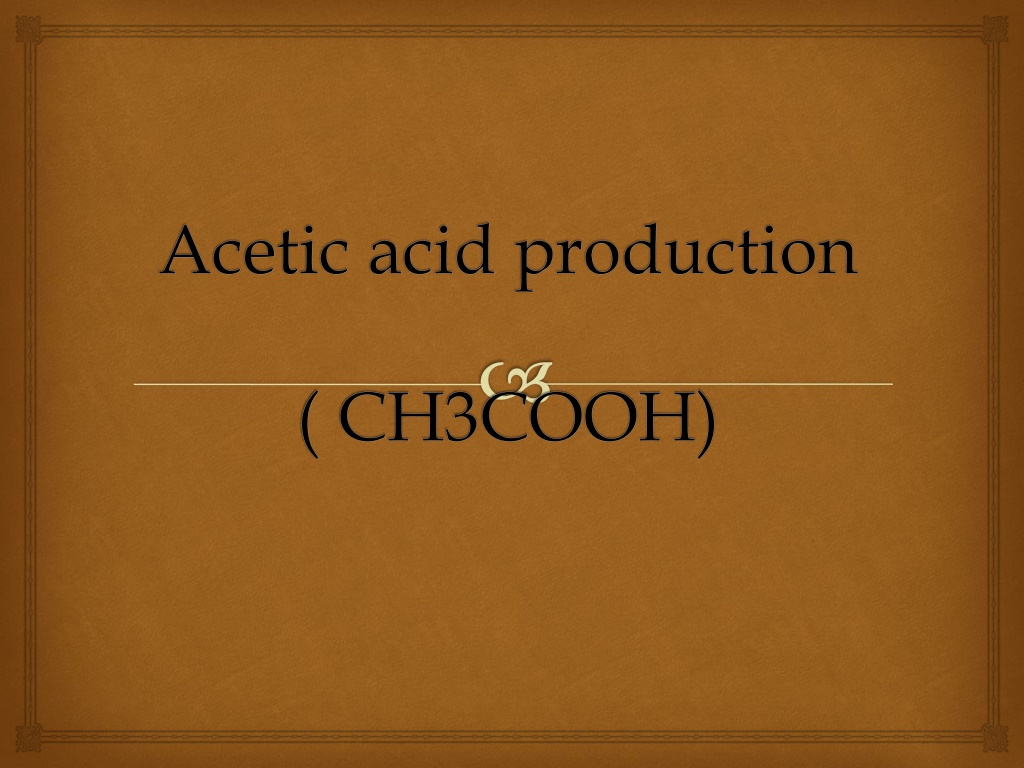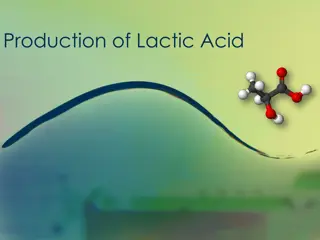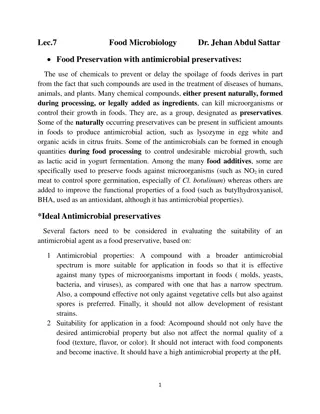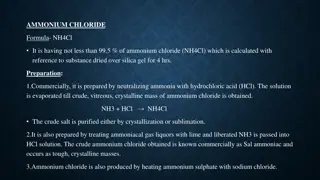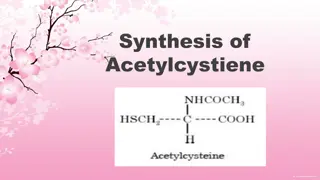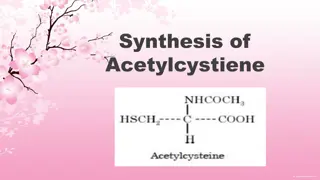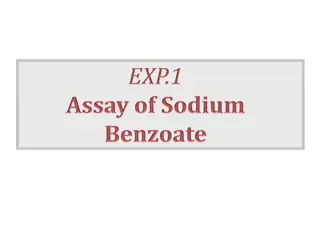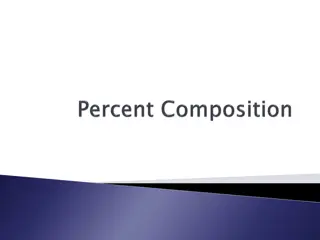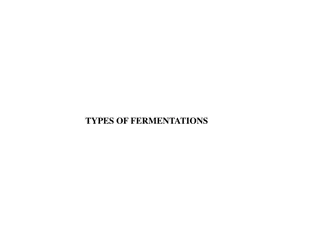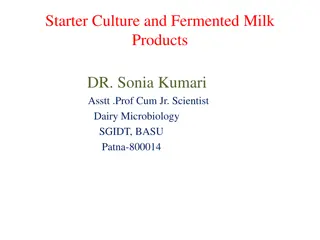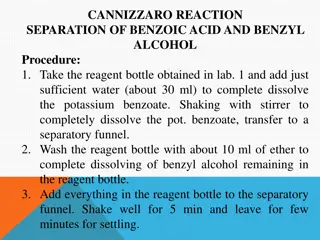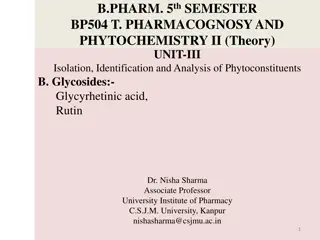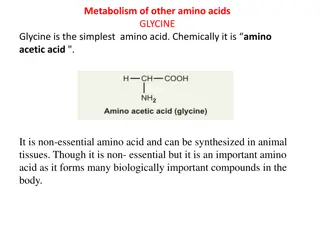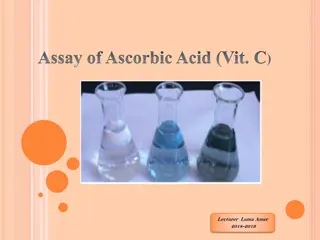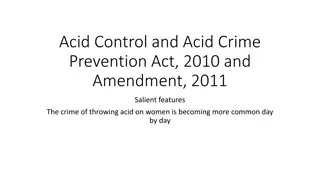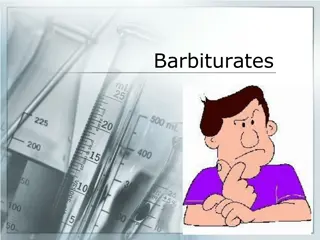The Production and Uses of Acetic Acid: From Ancient Practices to Modern Applications
The production of acetic acid, specifically in the form of vinegar, has a long history dating back to ancient times. Vinegar was utilized for various purposes such as a food condiment, treating wounds, and addressing different illnesses. Today, acetic acid is mainly used in the food industry for condiments, pickling, and food preservation. Different methods are employed to manufacture vinegar, with the Orleans Method being one of the oldest techniques. Modern applications of acetic acid highlight its significance and versatility in contemporary society.
Download Presentation

Please find below an Image/Link to download the presentation.
The content on the website is provided AS IS for your information and personal use only. It may not be sold, licensed, or shared on other websites without obtaining consent from the author. Download presentation by click this link. If you encounter any issues during the download, it is possible that the publisher has removed the file from their server.
E N D
Presentation Transcript
Acetic acid production ( CH3COOH)
Acetic acid production ( CH3COOH) Vinegar is a product resulting from the conversion of alcohol to acetic acid by acetic acid bacteria, Acetobacter spp. USES: (i) Ancient uses: The ancient uses of vinegar which can be seen from various records include a wide variety of uses including use as a food condiment, treatment of wounds, and a wide variety of illnesses such as plague, ringworms, burns,lameness, variocose veins. It was also used as a general cleansing agent. Finally, it was used as a cosmetic aid.
(ii) Modern uses: Vinegar is used today mainly in the food industry as; (a) a food condiment, sprinkled on certain foods such as fish at the table; (b) for pickling and preserving meats and vegetables; vinegar is particularly useful in this respect as it can reduce the pH of food below that which even sporeformers may not survive.
Pasteur confirmed that acetic acid is produced only in the presence of the bacteria, but he did not identify them. The genus name Acetobacter was put forward by Beijerinck in 1900. Ex. Acetobacter xylinum . Recently a new species, Acetobacter europaeus. Strains of acetic acid bacteria to be used in industrial production should : ( a) tolerate high concentrations of acetic acid;( b) require small amounts of nutrient;( c) not overoxidize the acetic acid formed; and( d) be high yielding in terms of the acetic acid produced.
The biochemical processes are simple and are shown below:
Over-oxidation can occur and it is undesirable. In over- oxidation acetic acid is converted to CO2 and H2O. It occurs when there is a lack or low level of alcohol. It occurs more frequently in submerged fermentations that in the trickle processes.
MANUFACTURE OF VINEGAR The three methods used for the production of vinegar are the Orleans Method (also known as the slow method), the Trickling (or quick) Method and Submerged Fermentation. The last two are the most widely used in modern times.
The Orleans (or Slow) Method The oldest method of vinegar production is the let alone method in which wine left in open vats became converted to vinegar by acetic acid bacteria entering it from the atmosphere. Later the wine was put in casks and left in the open field in the fielding process . A small amount of vinegar was introduced into a cask of wine to help initiate fermentation. The introduced vinegar not only lowered the pH to the disadvantage of many other organisms but also introduced an inoculum of acetic acid bacteria.
The process had a number of disadvantages: (a) It was slow in comparison with later methods, taking up to five weeks sometimes as against days, hence it is also known as the slow method. (b) It was inefficient, yielding 75-85% of the theoretical amount. (c) The mother of vinegar usually gradually filled the cask and effectively killed the process.
The Trickling Generators (Quick) Method (Acetobacter xylinum) The modern vinegar generator consists of a tank constructed usually of wood preferably of cypress and occasionally of stainless steel. A false bottom supports the coils of birchwood shavings and separates them from the collection chamber which occupies about one fifth of the total capacity of the generator (Fig. 14.1). A pump circulates the alcohol-acetic acid mixture from the reservoir through a heat exchanger to the top of the generator where a spray mechanism distributes it over the packing in much the same way as a trickling filter functions in waste-water treatment .
Air is forced through the false bottom up through the set-up. The cooling water in the heat exchanger is used to regulate the temperature in the generator so that it is between 29 C and 35 C; this is determined with thermometers placed at different levels of the generator. The top of the generator is covered but provision exists for exhaust air to be let out.
Meters measure three parameters: (a) the circulation of the mash, (b) the flow of cooling water through the heat exchange, and (c) the amount of air delivered through the system. If the air flow rate is too high alcohol and vinegar are lost in effluent air.
Submerged Generators With knowledge in submerged fermentation gained from the antibiotics and yeast industry it is not surprising that vinegar production was soon produced by the method. Several submerged growth vinegar generators have been described or are in operation.
The common feature in all submerged vinegar production is that the aeration must be very vigorous as shortage of oxygen because of the highly acid conditions of submerged production, would result in the death of the bacteria within 30 seconds. Furthermore, because a lot of heat is released (over 30,000 calories are released per gallon of ethanol) an efficient cooling system must be provided. All submerged vinegar is turbid because of the high bacterial content and have to be filtered.
Advantages (a) The efficiency of the acetator is much higher than that of the trickling generator; the production rate of the acetator may be 10-fold higher than a trickling unit. Values of 94% and 85% of the theoretical have been recorded for both the acetator and the trickling filter. (b) The quality is more uniform and the inexplicable variability in quality noted for the trickling generator is absent. (c) A much smaller space is occupied (about one-sixth) in comparison with the trickling generator. (d) It is easy and cheap to change from one type of vinegar to another. (e) Continuous production and automation can take place more easily than with trickling.
Disadvantages (a) A risk exists of complete stoppage following death of bacteria from power failure even for a short time. Automatic stand-by generators have helped to solve this problem. (b) It has a high rate of power consumption.
